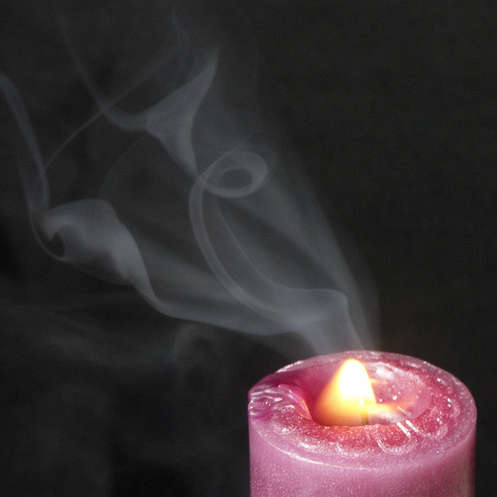FWP:
SETS == A,B; BHI; DEFINITION;
MIDPOINTS
EYES {3,1}
SPEAKING: {14,4}
This is one of only a handful of ghazals from which Faruqi has selected every single divan verse as superior.
The idea that collyrium and the voice are natural enemies is a well-known one, variously explained by the commentators. For discussion, see {44,1}.
The beloved's gorgeous dark eyes are surrounded with collyrium, which enhances their beauty and thus their power to 'speak' to the dazzled lover. Collyrium is made by holding a plate above the smoky flame of a burning lamp to collect the soot. The beloved's collyrium is made, however, from the 'smoke of the flame of a voice'.
How are we to put the two lines together? As so often, we have to decide for ourselves. (1) Perhaps the two lines describe the same situation: they vividly convey to us how beautiful and 'speaking' the beloved's collyrium-lined eyes are. (2) Or we might take the second line as a cause (the beloved has made herself some special fancy 'voice'-produced collyrium), and the first line as an effect (therefore her eyes are able to 'speak' even in silence).
(3) Or we might take the first line as a cause (the beloved's eyes 'speak' radiantly, burningly, even in silence) and the second line as an effect (therefore what looks like collyrium around her eyes is really the smoke from the flame of her eyes' 'voice'). In this latter case, we'd also have an example of 'elegance in assigning a cause': we might think that's collyrium around her eyes, but it's really an accumulated layer of smoke and soot from the flame of her brilliant eyes.
Then, of course, we have the elegant wordplay of navā , āvāz , kahnā ; and their opposite, ḳhāmushī . The form kahve is an archaic predecessor of the modern goyā (which the commentators use in their paraphrases). Both are conventionally used to mean 'as if'-- or 'so to speak', or 'one might say' (since both come from verbs of speaking). Besides enhancing the wordplay, the sequence kahve kih also creates a bit of visual play with the look of the script (since short vowels are not shown).
And finally, there is the clever 'midpoint' positioning of kahve , which here can be read with either of two clauses. One might (2a) say about the collyrium on the eyes, that it's the smoke of a voice-flame (since collyrium is made of smoke). Or else one might (2b) erroneously call it collyrium, although in fact it's really something quite different, not a commonplace cosmetic powder but a by-product of a voice-flame.
Compare this verse to its unpublished sibling, {147,4x}.
For extensive discussion of the nature and origin of the 'flame of the voice', see M{472,6}.

Nazm:
By 'voice-performing' is meant that the coquetries and sidelong glances from the eyes are such that even in silence they are speaking. So to speak [goyā], the collyrium [kājal] of this eye has collected lamp-black [pāṛnā] from the flame of the voice. (155)
== Nazm page 155